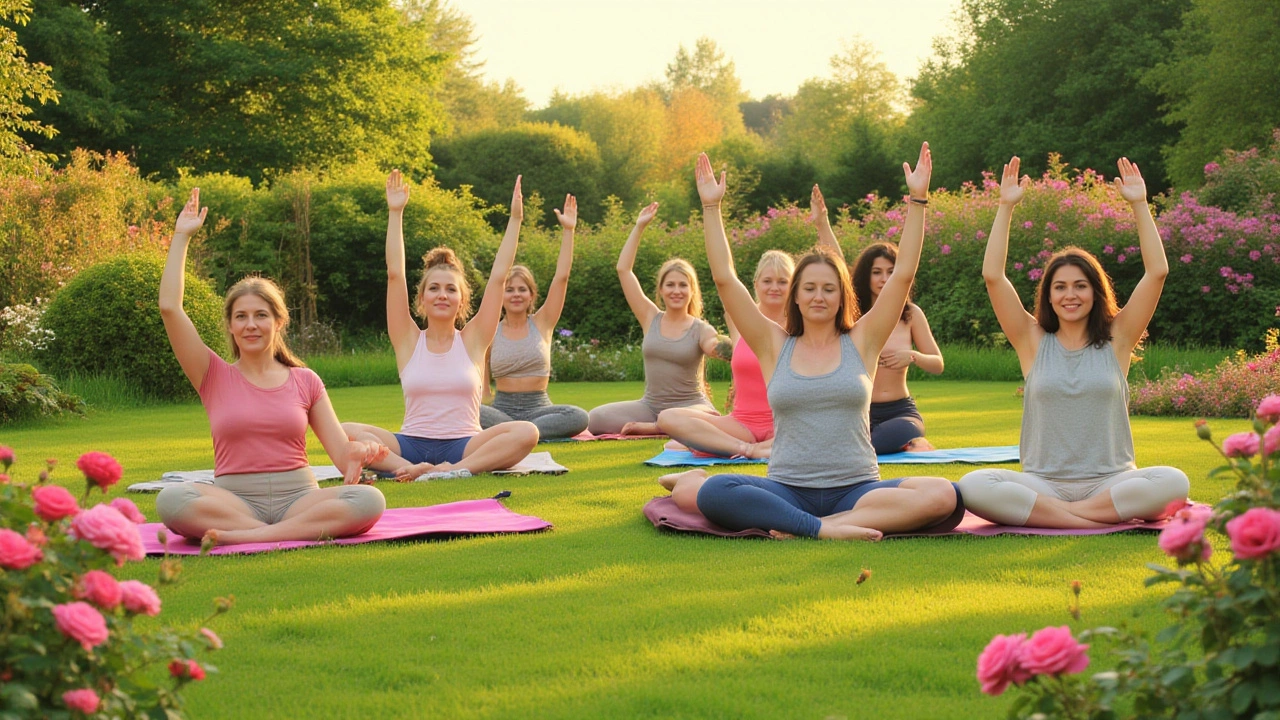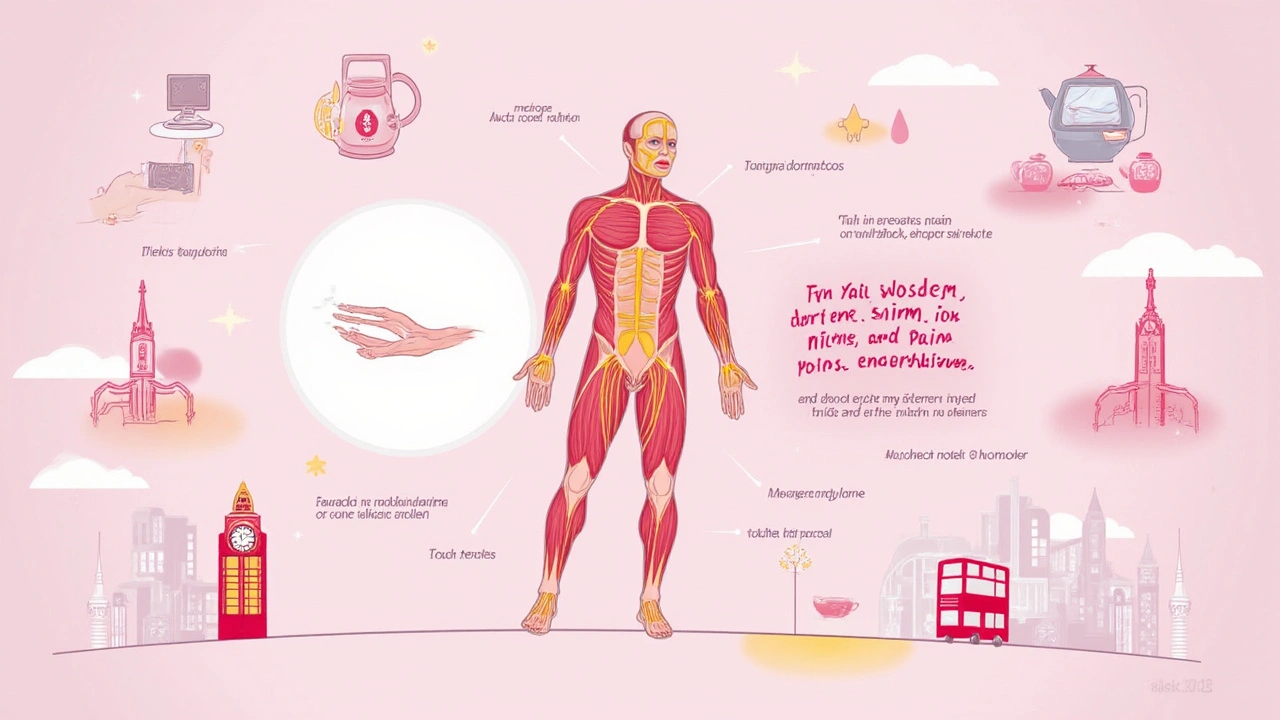Body Massage Explained: Pain Relief, Relaxation, and Total Wellbeing

If someone told you that lying still while someone works your muscles could change your day, would you believe them? A lot of people picture fancy spas or luxury hotels, but body massage has worked its way deep into daily life, sports teams, hospitals, and homes. Dig into research and you’ll find that a good massage is more than a fleeting splurge—it can bring down pain, fend off stress, and tune up your body in ways that catch most people off guard. People once avoided talking about their chronic aches, writing the pain off as part of life, but now they’re swapping stories about their favorite techniques and talking up skilled massage therapists like local legends.
How Massage Relieves Pain, Knots, and Daily Stress
Chronic pain can feel like an uninvited roommate, especially for people glued to a laptop or always on their feet. That dull ache at the base of your neck? The tension running down your back? Turns out, a professional massage doesn’t just make you feel better—studies show it helps lower levels of cortisol, your body’s main stress hormone. Researchers at Cedars-Sinai Medical Center ran a 2017 trial where one 45-minute Swedish massage session reduced stress hormones and boosted immune cells in participants. They literally measured more ‘killer cells’ in people’s blood just an hour after treatment.
When you’re dealing with knots or chronic tightness, massage therapy physically works out those kinks. Blood flow increases, bringing fresh oxygen and whisking away waste products like lactic acid. That’s why so many athletes swear by massage. The soreness after a workout drops and recovery picks up speed.
For folks with conditions like fibromyalgia, arthritis, or migraines, targeted massage offers real, measurable relief—not just pleasant relaxation. The hands-on pressure interrupts the body’s constant pain signals travelling through nerves. Studies from the Touch Research Institute in Miami showed that regular massage reduced the frequency of migraine attacks by nearly half for chronic sufferers. The best part? You don’t need to be an athlete or dealing with major injuries to notice a difference. Even gentle, light-touch massages stimulate your body’s own pain-blocking neurotransmitters.
After a session, the effects don’t stop. People report sleeping better, seeing fewer headaches, and even thinking more clearly (goodbye brain fog). One therapeutic benefit people forget to mention: during a massage, you’re forced to pause, focus on your body, and let your nervous system chill out. That moment matters more than ever now, with endless notifications and screens stalking your attention.
| Benefit | Short-term Effect | Long-term Effect |
|---|---|---|
| Pain Relief | Reduced soreness after 1 session | Chronic pain decreased after 6 weeks* |
| Stress Reduction | Lower cortisol within hours | Improved mood, less anxiety |
| Better Sleep | Snooze better the same night | Consistent deeper sleep after repeat sessions |
| Muscle Recovery | Faster healing post-exercise | Lower injury risk, better flexibility |
*The American Massage Therapy Association reported up to 35% pain reduction in chronic pain after 6 weeks of weekly sessions.
Different Massage Techniques and Their Unique Benefits
Walk into a massage clinic and you’ll see the menu stuffed with techniques. It’s not just for show—each one targets a different goal. If you’re hunting for pain relief, deep tissue massage is the real MVP. Therapists use elbows and strong hands to dive into the deep muscle layers. It hurts, but in a satisfying way, especially when you know that studies have shown improvements for back pain, sciatica, and even old sports injuries that just won’t quit.
Swedish massage, probably the classic option people envision, is all about big, sweeping motions. It boosts circulation and relaxes the body, perfect for anyone new to massage or dealing with general tension. For people who feel wiped out from work or run ragged by parenthood (looking at you, Nina), this style can hit the reset button for both body and mind.
Feeling adventurous? Thai massage blends pressure, stretching, and yoga-like poses. Don’t worry; you don’t need to be flexible. You’ll be moved gently into stretches designed to release built-up tension in places you didn’t even realize were tight. The first time I tried it, I walked out feeling inches taller—no joke.
Sports massage isn’t just for athletes. If you jog on weekends or garden too enthusiastically, therapists tweak moves to focus on specific muscle groups. It’s why football teams often have massage therapists alongside their coaches. Massage before or after activity can help prevent strains or speed up recovery.
Then there’s aromatherapy massage, which combines gentle pressure with essential oils. Researchers at the University of Maryland showed that lavender oil, used during massage, not only enhances relaxation but can reduce symptoms of mild depression. It’s a winning combo if you’re seeking more than just muscle relief.
Don’t overlook specialty techniques like lymphatic drainage, aimed at reducing swelling and boosting immunity, or hot stone massage, where warm basalt stones melt away muscle tension. Everybody’s different, so don't be afraid to try out several and see which makes your body happiest.

How Often and When Should You Book a Massage?
I used to think massages were for birthdays and special occasions, but keeping your body running right sometimes takes a regular tune-up. Frequency depends on your goals. A 2018 survey by the American Massage Therapy Association showed that most people see the most benefits with sessions every 1-2 weeks, especially for chronic pain or high-stress lifestyles.
If you’re using massage for recovery—like after an injury or tough workout—a weekly deep tissue or sports massage can keep muscles loose and speed healing. For pure relaxation or stress management, once a month is plenty for most. Runners, cyclists, and gym rats often book after major events or before starting new training regimens. The key is to listen to your own body. If you start waking up stiff, or your usual aches come creeping back, that’s your clue.
One practical tip: Don’t hit the table cold. Warm up by walking or stretching a bit before your appointment. Hydrate before and after—a good massage gets your blood and lymph moving, so you’ll want to flush out what’s released from your muscles. Eat a light meal beforehand (you don't want to be hungry or stuffed), skip heavy caffeine, and don’t rush right back into work or chores. Give yourself a window to enjoy the afterglow.
If time or budget is an issue, ask about shorter sessions focusing on trouble spots, or look for student clinics where experienced supervisors oversee new therapists. Even a 30-minute back and shoulders massage can make a world of difference if you’re strapped for hours or cash.
Mental and Emotional Perks Beyond Physical Relief
At first blush, it might sound odd that a good rub-down relaxes your mind as much as your muscles, but the evidence stacks up fast. A study published in the International Journal of Neuroscience showed that regular massage therapy decreased anxiety, improved mood, and boosted brainpower scores for a group of college students cramming for finals. No magic involved—massage helps regulate heart rate and turns down the ‘fight or flight’ response.
That’s especially key right now, when burnout and screen fatigue have pretty much become national pastimes. Even people who aren’t deeply stressed out report that massage sessions act as “body resets” that help them focus and sleep. I still remember Nina telling me after her first prenatal massage, “I actually felt present in my own skin again.” For people struggling with anxiety or depression (and there are a lot these days), research at Massachusetts General Hospital found that weekly massage sessions improved symptoms even in folks who hadn’t seen results with medication alone.
It’s not just for adults, either. Kids with autism, ADHD, or trauma backgrounds often see reduced anxiety and more restful sleep with even gentle shoulder or hand massages. Nursing homes are adding touch therapies to their routines, and residents show less agitation and better moods. Small, simple acts of touch help our nervous systems find some grounding.
After a tough week, an hour on the massage table feels better than a nap or a glass of wine. You slip out of your endless mental checklist and back into your body. Gifting a massage isn’t just “pampering”—it’s letting someone hit pause and reconnect. If that isn’t stress relief, what is?

Tips for Getting the Most Out of Your Massage Sessions
To get the most mileage out of your massage, go in with a plan. Start by picking the right style. Don’t be shy—tell your therapist exactly what’s bothering you. The more info they have, the more tailored and effective your session gets. If the pressure’s too light or too heavy, speak up. Good therapists appreciate feedback and want you to leave feeling better, not battered.
Arrive at least 10 minutes early so you’re not bursting through the door in a flurry of stress. Leave your phone on silent mode and let your mind unplug. Some people bring a playlist of relaxing music (if the spa allows); others close their eyes and focus on their breath. If you’re new to touch or nervous, say so. Your therapist can adjust their approach and help you feel comfortable.
After your session, take it easy. Get up slowly, especially if you feel lightheaded. Drink a full glass of water right away to help your body flush out the byproducts released by muscle work. Avoid hitting the gym, drinking alcohol, or scarfing a heavy meal just afterward. Instead, spend the rest of your day doing mellow activities or tucking into a healthy meal. It’s the best way to lock in that refreshed, limber feeling.
If you want to extend the benefits, try at-home tricks like foam rolling, gentle stretching, or self-massage between sessions. Little tweaks—stand up and stretch every hour, walk barefoot on the grass, use a massage ball on tight feet—keep pain and tension from creeping back in.
And the most important tip of all: Make time for your body, even when life gets busy. Those hour-long sessions aren’t indulgent—they’re maintenance. Your mind, muscles, and mood will thank you for it.




Angie Torres
August 2, 2025 AT 14:04Honestly, I don't get all the fuss about massages. People say it helps with pain and relaxation, but I think it's just a pricey way to take a nap. You could just stretch or do some simple exercises instead.
And all these fancy techniques? Maybe it works, maybe it doesn't, but I believe that most of it is placebo. Just save your money for something more useful.
If you want to relieve pain, the basics like proper posture and hydration go a longer way in my opinion.
What's your experience though? Does massage actually make a big difference for you?
Erika Hernández
August 4, 2025 AT 21:21Oh, I totally disagree. For me, massage is like a miracle when I'm stressed out or dealing with muscle aches. It's not about just napping, it’s about the intentional care for your body.
When a skilled masseuse works on your tense spots, you feel the tension melt away. That warmth and pressure trigger real physiological changes that improve your mood and physical health.
I believe it’s a beautiful form of self-love and healing. Better than popping a pill for pain, right?
Plus, massages help stimulate circulation, which has tons of benefits beyond just relaxing the muscles.
Seriously, if you haven't tried a deep tissue massage, you're missing out big time!
Sharon Chui
August 7, 2025 AT 04:54Sometimes I wonder if massage therapy is actually part of some larger scheme to distract us from the real problems in modern healthcare. Like, they make us believe a little rubdown can fix everything, but what about chronic illnesses or systemic stress?
It’s almost like a pastel-coated bandage for a deeper societal wound.
Sure, it feels good and temporarily eases pain, but is it enough? Or are we just numbing ourselves to avoid confronting uncomfortable realities?
Still, I can’t deny the soothing vibes when someone works those knots out. It's a conflicting blend of comfort and suspicion in my mind.
Hanna Holmberg
August 9, 2025 AT 12:28This post beautifully highlights the multifaceted benefits of massage, from pain relief to mental wellness. It’s essential to recognize that massage is both an art and a science.
Different techniques like Swedish, deep tissue, and trigger point therapy each serve unique purposes depending on the individual's needs. For example, slow, gentle strokes promote relaxation, whereas deeper pressure targets muscle knots.
I love seeing posts that encourage people to listen to their bodies and explore hands-on approaches to health. One practical tip I always give clients is to communicate openly with their therapist to get the best results.
Consistency matters too; monthly sessions can maintain wellbeing and prevent stress accumulation.
Massage isn't just luxury—it's rooted in centuries of therapeutic wisdom.
Kate Cole
August 11, 2025 AT 20:01As someone who enjoys diving deep into language and ideas, I appreciate how this article captures the holistic nature of massage. It's not merely a physical treatment but an experience that nourishes the mind and spirit as well.
Moreover, the practical tips are invaluable. I find that combining mindfulness with massage routines enhances the calming effects significantly. Being present during the session transforms a simple touch into a profound healing ritual.
Language matters here; calling it 'total wellbeing' is fitting because it's a comprehensive approach.
Small gestures like warm oils and ambient music can elevate the entire process, making it truly immersive.
Does anyone else use massage as part of their mental health toolkit?
vincent ngeso
August 14, 2025 AT 02:40I’ve experienced the power of a good massage, especially after long days on my feet. There’s definitely an emotional release combined with the physical relief that’s hard to describe.
Sometimes, I just let myself drift into the moment, and it feels like my body talks back, telling me what hurts or needs attention.
I think it’s important to listen and trust those feelings to heal properly.
Massage can be a critical reminder that our bodies are alive and responsive. We often neglect that in our fast-paced lives.
Anyone else use massage as a form of mindfulness?
Sean Phoenix
August 16, 2025 AT 11:08Hah, you think massage is just pain relief and relaxation? What if it’s actually a way for big industries to keep us hooked on fleeting pleasure and distraction from existential dread? Ever think about that?
The calming nerves part could just be a biochemical manipulation, a cover-up to keep the masses calm while invisible powers pull the strings.
Don’t get me wrong, I love a good rubdown, but the conspiracy side of me wonders what’s really going on beneath those hands.
Still, it’s hard not to enjoy the momentary bliss.
Just keep your eyes open and your skepticism sharper.
Kristin Briggs
August 18, 2025 AT 18:41Okay, so let me highlight some jargon you folks might like: massage activates the parasympathetic nervous system, reducing cortisol levels and triggering endorphin release—which basically means it lowers your stress hormones and makes you feel euphoric.
The induction of these biochemical shifts is why massages are not just fluff but legit therapeutic interventions.
Also, let’s not forget myofascial release techniques that target the fascia, which is crucial for mobility and pain modulation.
So yeah, from an academic standpoint, massage is a multifaceted approach to support holistic wellbeing that deserves more spotlight.
Anyone else geek out on the science behind it?
Marie-Eve Beaupré
August 23, 2025 AT 09:48While massages can feel nice, I’m skeptical about some of the exaggerated claims out there. The evidence for long-term benefits beyond short-term relief is thin, and too often, it's marketed with little regulation.
Plus, many practitioners lack standardized training, so the quality varies wildly.
I think it’s smart to approach massage as an adjunct treatment rather than a cure-all and always seek licensed professionals.
That balance between enthusiasm and criticism helps avoid unnecessary expenses and disappointment.
Just my two cents.
Sophie Kerr
August 26, 2025 AT 11:20Intriguing post. While I appreciate the emotional and physical angles, I remain somewhat detached from the hype around massage.
In my view, the practice, although helpful, is overrated in modern wellness culture where trends become dogma.
That said, I cannot deny the ritualistic beauty and the brief respite it offers from incessant mental chatter.
Massages can be a momentary sanctuary, but not the panacea some make it out to be.
Thought-provoking indeed.